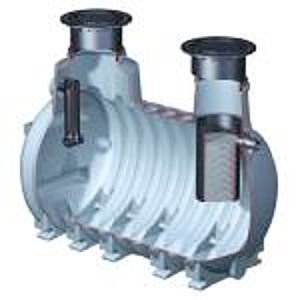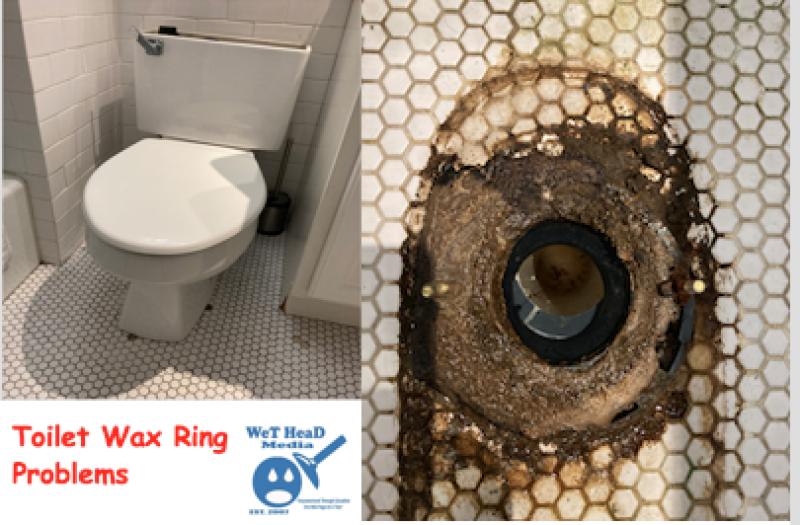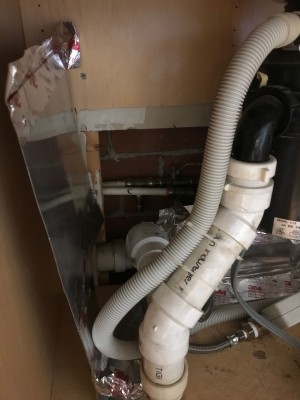How To Locate A Septic Tank On A Property
Knowing the location of a septic tank on your property is one of the most important things you should know when buying a property that has a septic system instead of a sanitary sewer. In fact if I was buying a property, I would insist on the septic system being serviced and inspected with a report of the condition of the system before going through with the sale. It is not uncommon to have the installation of a new system have costs as high as $20,000. If the current owner does not know the location of the septic tank it should raise a red flag saying the septic system has not been properly maintained.
There are a number of ways a tank can be located. In most cases the owner has a map with measurements taken from two easily identified points and where the measured points intersect is where the septic tank lid is located. Sometimes the measurements may even be written somewhere like on a basement wall where the line exits the home. Frequently the local building department will have a map of the septic system on file that you can get a copy of. If you are buying a property and cannot find any information on where the septic tank is located you may even try looking up past owners of the property and see if they may have any information to offer.
If all attempts to locate paperwork or, knowledge of the system have failed you may try calling around to the local septic service companies to see if you can find who has serviced the system in the past and if they know where the tank is located. You may also try calling a service company to have them locate the tank. We drain pro’s often demonstrate an uncanny knack for locating a septic tank. Quite often we locate tanks with just visual cues and a probe. We look for things like where the line to the tank leave the building, frequently the tank is in a straight like out from where the line leaves the building. Along that line we look for depressions in the ground where the tank might have been dug up in the past without all the soil getting back into the hole. We look for shallow tanks in the winter where the ground is warmer and snow melts or, the grass looks healthier than the typical winter lawn in a rectangular patch the size of a septic tank.

In the summer shallow tanks appear as spots where the grass is drier unable to get enough water because the concrete tank is shallow under the surface. These are all valuable clues that help us zoom in on the tank location where we start sticking the probe in the ground to find a large flat surface underground that is about 4′ X 8′ or, slightly larger. Once we locate the tank with the probe we mark the outline of the tank and where we guess the cover may be. The covers are usually located on the long centerline of the tank with the inlet area cover either a couple of feet in from the edge of the tank or, right on the edge of the tank where the line comes in. Sometimes when the wide side of the tank faces the house the inlet cover may be located on the side of the tank where the line comes in near the end of the tank. Sometimes we just get lucky on deeper septic tanks and manage to locate risers, which are access hatches that come up close to the surface.
If the expert intuition fails to come up with the location of the tank there is still an option to use before anyone just digs up the whole yard looking for the tank. Modern technology has brought us electronic locating and many septic service companies have a special “Sonde” which is in a small transmitter in a floating package that can be flushed through a toilet and will float through the sewer line to the septic tank where they can locate the location of the sonde with an electronic locating device with extreme accuracy. If the tank is full and the line is backing up they may have to attach the sonde to a sewer snake or push rod and push the sonde out to the tank to locate it. Some sewer inspection cameras also have sondes built into them and can be used to locate a septic tank. There really is no need to just dig up the whole yard blindly searching for a septic tank.
Once you have located the tank and had it properly serviced and inspected be good to yourself and make an accurate map using triangulation to pinpoint the location of the access covers for proper servicing. Keep the paper map on file with important papers where it won’t be lost and as a safeguard write the location in a place such as the basement wall where the line exits the house or on a garage wall.




Must be maintained or else can be a pricey fix.
You do not know how may times I get a call for cesspool service from a new homeowner that did not get septic tank\system maintenance performed before the home purchase. They get pretty shocked at the additional costs they have to pay.
You ought to take part in a contest for one of the
greatest blogs on the internet. I am going to
highly recommend this blog!
I am in fact glad to read this website posts which contains tons of useful facts, thanks for providing
such data.